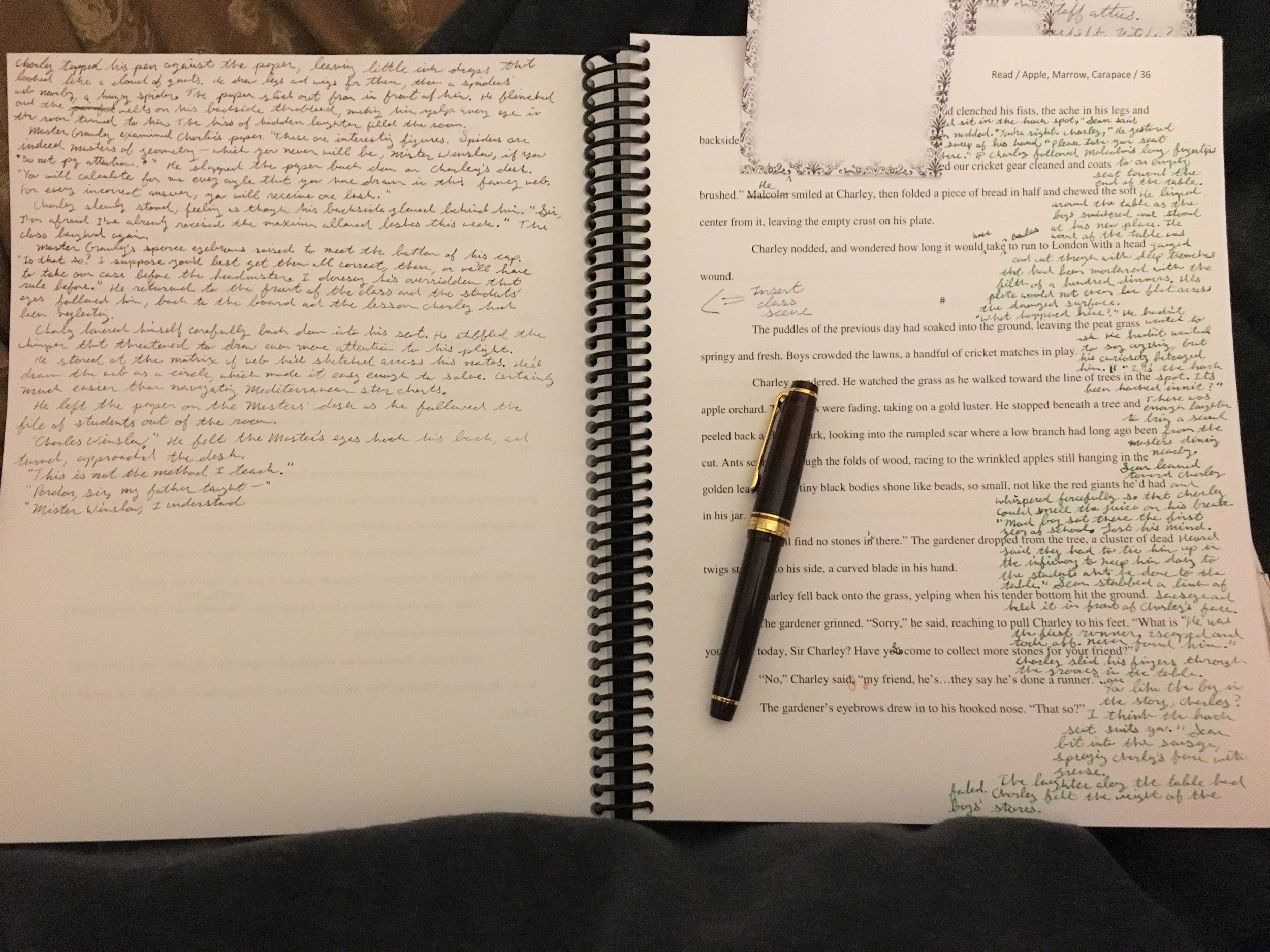(Sarah Read is an author, editor, yarn artist, and pen/paper/ink addict. You can find more about her at her website and on Twitter.)
Last year for NaNoWriMo, I blogged about how I hand-write all my novels and short stories (and I'm hand-writing another novel this month!). Once you've written your book, though, it doesn't do much good sitting hidden away in that beautiful notebook. These days, to reach readers, your story must--at some point--become digital. It must shuffle off its analog coil and join the ranks of pixels and kb in the great big data cloud. And it's going to be there a while--months, years--before it assumes its final paper form back in your hands again.
So how do you keep the analog spirit alive during those digital years?
You're going to have to do edits--probably lots (and lots) of them--and sure, you'll have to input them into the digital doc, but if you're analog-minded, I highly recommend making your edits on a hard copy. You can get your manuscript printed and spiral-bound very inexpensively at a print shop. Of course, the paper will not be luxurious, but it's better than nothing and definitely better than a screen. Once you've got a paper copy in your hands, break out the color-coded pens, the sticky notes, make doodles or sketches, add whole scenes on the backs of pages--use those margins.
It's great to have a hard copy of your edits. You can refer back to them if you need information from a previous draft, and you can track the visible footprints of your writing process. That bound draft can go with you anywhere, so you can always be ready to get some work done. And when the work is done, the drafts make nice keepsakes.
I have two bound drafts of my first novel, plus the hand-written one, and in a few months, it will exist as a real book. There's something magical about being able to hold physical copies of its life cycle. You can feel all the weight of the work you've put into it over the years. It's tangible. Of course, the first hand-written draft is hugely different from its final form, and a lot of that development I was able to do with pen on paper.
That's not the only way to keep analog in your life while you're eyebrow-deep in edits. Edits require lots of Keeping Track of Things. Lots of planning. Reminders and restructuring and outlines. Deadlines to schedule, lists of people who have been helpful. Lists and lists and lists. I keep what I call a "brain book" (or sometimes several) for every project where I can track all of this information. In the last few years I've been using the Bullet Journal method to help tame the chaos of these notes. That brain book becomes like a book planner--and it, too, makes a nice keepsake of the process of a big project. It's fun, and a little daunting, to flip back through those notes and see all the work that went into the book.
Between paper edits and a book planner, you can at least keep your pens in rotation while you're deep in the digital doldrums of novel writing. Of course, you can also be hand-writing a new book while typing and editing a different one. Or at least outlining or planning the next one. Or all of the above. It's a slightly maddening level of multitasking, but your pens will love it.
The point is to stay busy and keep those pens inked up. And good luck at NaNoWriMo this month! I'll be posting my progress on Instagram @inkwellmonster.
Enjoy reading The Pen Addict? Then consider becoming a member to receive additional weekly content, giveaways, and discounts in The Pen Addict shop. Plus, you support me and the site directly, for which I am very grateful.
Membership starts at just $5/month, with a discounted annual option available. To find out more about membership click here and join us!










